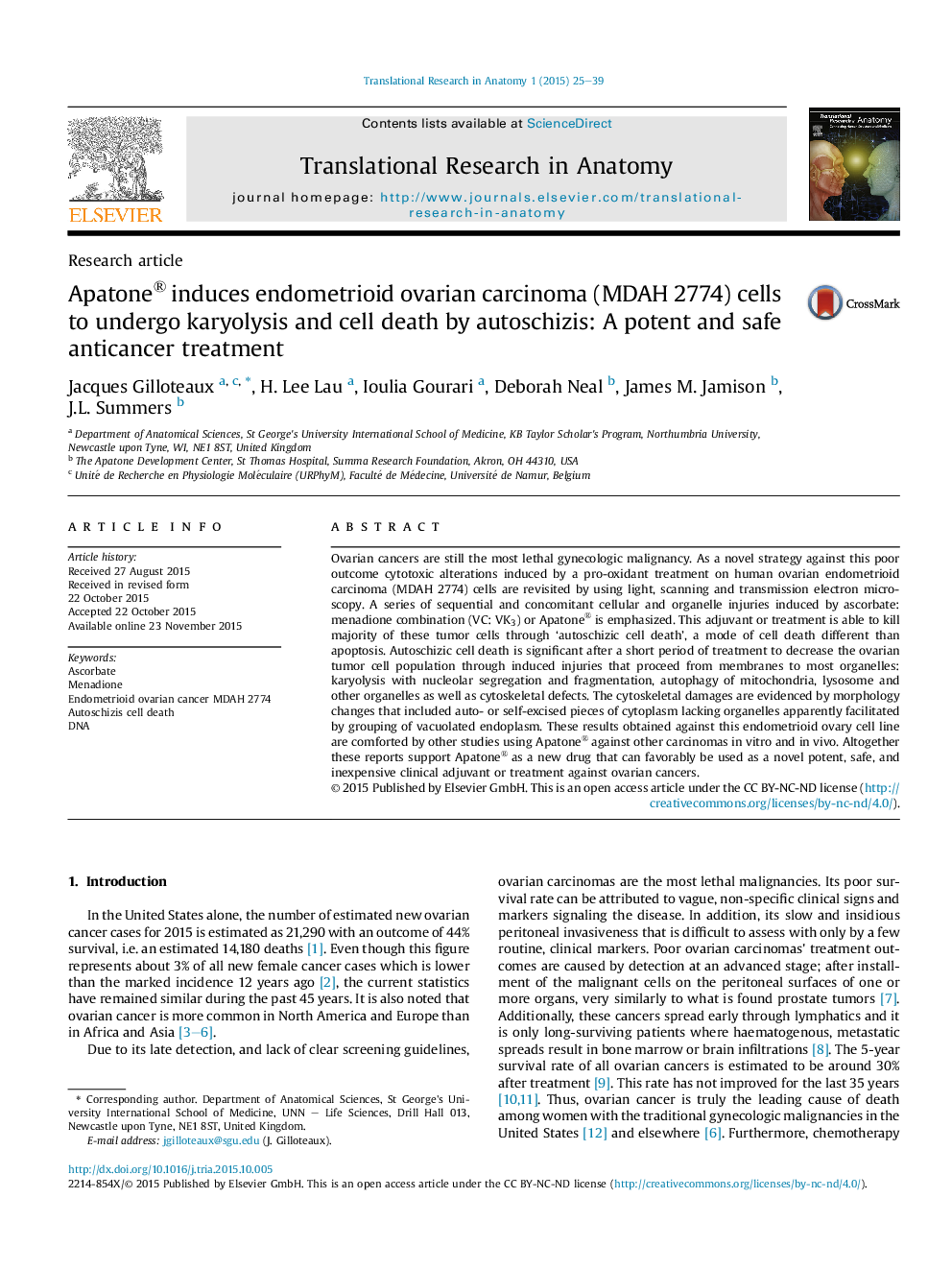| Article ID | Journal | Published Year | Pages | File Type |
|---|---|---|---|---|
| 3278490 | Translational Research in Anatomy | 2015 | 15 Pages |
Ovarian cancers are still the most lethal gynecologic malignancy. As a novel strategy against this poor outcome cytotoxic alterations induced by a pro-oxidant treatment on human ovarian endometrioid carcinoma (MDAH 2774) cells are revisited by using light, scanning and transmission electron microscopy. A series of sequential and concomitant cellular and organelle injuries induced by ascorbate: menadione combination (VC: VK3) or Apatone® is emphasized. This adjuvant or treatment is able to kill majority of these tumor cells through ‘autoschizic cell death’, a mode of cell death different than apoptosis. Autoschizic cell death is significant after a short period of treatment to decrease the ovarian tumor cell population through induced injuries that proceed from membranes to most organelles: karyolysis with nucleolar segregation and fragmentation, autophagy of mitochondria, lysosome and other organelles as well as cytoskeletal defects. The cytoskeletal damages are evidenced by morphology changes that included auto- or self-excised pieces of cytoplasm lacking organelles apparently facilitated by grouping of vacuolated endoplasm. These results obtained against this endometrioid ovary cell line are comforted by other studies using Apatone® against other carcinomas in vitro and in vivo. Altogether these reports support Apatone® as a new drug that can favorably be used as a novel potent, safe, and inexpensive clinical adjuvant or treatment against ovarian cancers.
